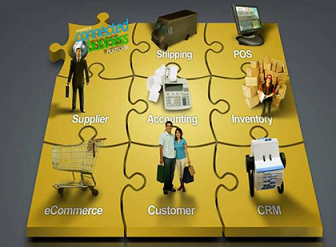With the existing new technologies and innovations emerging every other day, the information technology is an increasingly interesting platform not just for developers, but also for all sorts of non-technical common people. With the need for making things easier in the daily life and with the technological advancements, more and more daily activities are shifting online. Having said this, the web can be a very useful tool as well as an intimidating proposition at the same time. Computer based technology and information systems are actually quite large and vast spread in their utility, have broader spectrum and details. For instance when anyone uses the web for browsing, sending or receiving e-mails, playing online games or even sharing multimedia files with others, all the data has to pass through a set of complicated networks and soft-wares. There are many processes involved that are responsible for management of such systems. The prime […]
Cable Television
Cable television is a system of providing television programs to consumers via radio frequency (RF) signals transmitted to televisions through coaxial cables or digital light pulses through fixed optical fibers located on the subscriber’s property, much like the over-the-air method used in traditional broadcast television (via radio waves) in which a television antenna is required. FM radio programming, high-speed Internet, telephony, and similar non-television services may also be provided. The major difference is the change of radio frequency signals used and optical connections to the subscriber property. Most television sets are cable-ready and have a cable television tuner capable of receiving cable TV already built-in that is delivered as an analog signal. To obtain premium television most televisions require a set top box called a cable converter that processes digital signals. The majority of basic cable channels can be received without a converter or digital television adapter that the cable […]
Communication satellite
Communications satellite is an artificial satellite stationed in space for the purpose of telecommunications. Modern communications satellites use a variety of orbits including geostationary orbits, Molniya orbits, other elliptical orbits and low (polar and non-polar) Earth orbits. For fixed (point-to-point) services, communications satellites provide a microwave radio relay technology complementary to that of communication cables. They are also used for mobile applications such as communications to ships, vehicles, planes and hand-held terminals, and for TV and radio broadcasting, for which application of other technologies, such as cable television, is impractical or impossible A satellite in a geostationary orbit appears to be in a fixed position to an earth-based observer. A geostationary satellite revolves around the earth at the same angular velocity of the earth itself, 360 degrees every 24 hours in an equatorial orbit, and therefore it seems to be in a fixed position over the equator. The launch of […]
Various Forms of Feedback in Mass Communication
Feed back In its simplest form the feedback principle means that a behavior is tested with reference to its result and success or failure of this result influences the future behavior Though not exactly cut-out for human communication, the Shannon-Weaver model provides clear guidelines for researchers to mark more avenues for graphic presentation of the elements in daily human communication. Forms of feed back There are five main categories of feedback. They are listed in the order in which they occur most frequently in daily conversations. 1. Evaluation Making a judgment about the worth, goodness, or appropriateness of the sender’s statement. 2. Interpretation Paraphrasing – attempting to explain what the sender’s statement means. 3. Support Attempting to assist or support the sender. 4. Probing Attempting to gain additional information, continue the discussion, or clarify a point. 5. Understanding Attempting to discover completely what the sender means by his/her statement. Role […]
